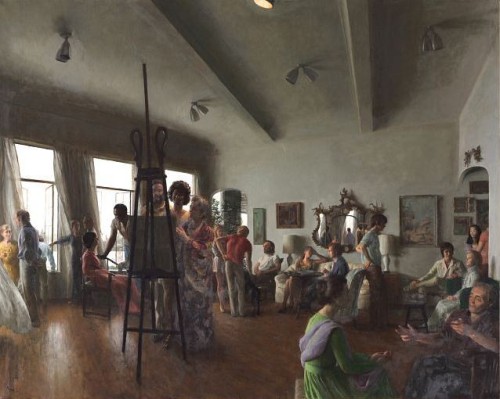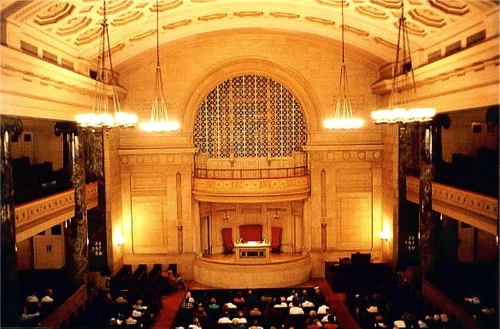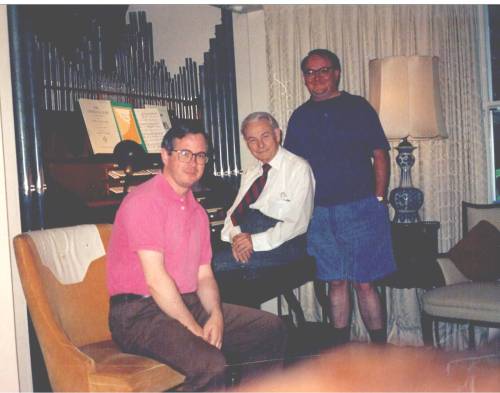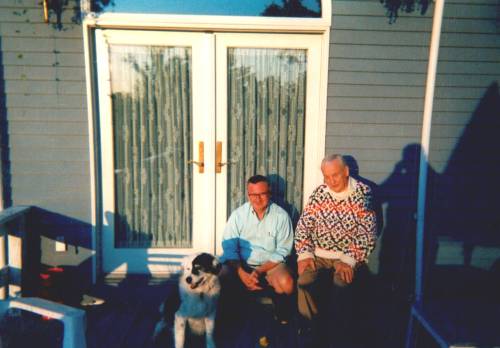I presented the following paper at the
Boston AGO convention in 2014:
Thomas Richner: Organist, Pianist, Teacher, and Composer
American Guild of Organists National Convention
June 26, 2014 Boston, Mass.
Copyright 2014 © Neal Campbell

1. Brief Introduction
Thomas Richner was not part of the “organ scene” of Boston musical life in the way that—say—George Faxon or Francis Snow were. Indeed, he never maintained a permanent residence in Boston, but rather commuted from his home on Long Island or his apartment in New Brunswick for his duties in Boston, where he had an apartment in the Prudential Center.
But from 1971-1993 he was the organist of The First Church of Christ, Scientist, The Mother Church, in Boston and in that capacity he was one of the most visible and best-known of Boston organists, and—indeed—of American organists in general.
Contributing to this was the fact that
a) he was already a well-known concert pianist and professor at Rutgers University,
b) The Mother Church, as the headquarters church of the denomination, was well-known, services were broadcast internationally, and it provided instant name recognition, and
c) the organ was already famous as the largest Aeolian-Skinner ever built.
2. Biographical Information
Born November 4, 1911 in Point Marion, PA, “where the Cheat River and the Monongahila River come together—that’s the point!” as Uncle T would say.
And, lest you think I’m being overly familiar in referring to Dr. Richner as Uncle T—believe me—to anyone who was in his presence for more than ten or fifteen minutes, Thomas Benjamin Richner was Uncle T at his own insistence.
There was not a lot of musical incentive growing up, but he did develop an early interest from local musicians and he eventually earned the B.Mus. degree from West Virginia University.
He found his way to New York to study with Dora Zaslavsky who, together with her husband—the famous painter John Koch, quickly became family to him. Later, he even lived across the street from them in Setauket, a lovely village on the north shore of Long Island, when they told him of a bungalow that was for sale. Uncle T was even represented in one of Koch’s paintings. It was Koch’s custom to use friends and colleagues as subjects in the paintings of his and Dora’s life together in New York.

“Summer Party” by John Koch. Tom Richner is depicted looking out the window next to the woman gesturing outside.
Tom won the Naumburg Award in 1940, sharing the prize with pianist Abbey Simon, and violinist Harry Cykman—and his significant performing career was launched, including a debut recital in New York at Town Hall for which the reviewer in the New York Times declared that he was a “born Mozart player,” an appellation that stuck for life.
He earned masters and doctors degrees from Columbia University, where his dissertation titled Orientation for Interpreting Mozart’s Piano Sonatas was turned into a standard reference book of the era. He taught at Teachers College from 1946-68, and at Rutgers University from 1959-86.
During his early years in New York he converted to Christian Science, and for the rest of his life he remained a devoted follower, but he was never ridged, doctrinaire, or proselytizing about it. It was just a natural part of his life.
In the 1950s Tom became the organist of the Fifth Church of Christ, Scientist, in New York, an influential branch church which inhabits the lower floors of a mid-town office building near Grand Central Terminal which had an old Skinner organ. It was rebuilt by Aeolian-Skinner in 1955 when he and G. Donald Harrison set about turning it into a deluxe instrument for playing services, as well as for repertoire, including double antiphonal expressive divisions which T used to great effect in the “tapers” at the conclusion of the hymns and other passive portions of the service. While retaining all of the solo and color stops of the old organ, it exhibits all of the classic hallmarks of Harrison’s post WW II organs—cohesive independent choruses on all manuals, and fully developed Positiv and Pedal divisions. It is truly a great organ desperately in need of restoration or relocation.

Fifth Church of Christ, Scientist, New York City
All of which brings up T’s organ playing and study. He was essentially self-taught. But he regularly went to the Sunday afternoon services at St. Bartholomew’s Church played by the legendary David McK. Williams, and T emulated much of Williams’ style in accompanying and service playing. I don’t think it is an overstatement to say that DMcKW’s playing had the single most influential effect on T’s own organ playing. T talked about David and his playing until the end of his life—almost with tears in his eyes. He said it was that beautiful and he was that moved.
Tom later received the honorary D.Mus. from Colby College, where he directed the Richner-Strong Institute in the summers, and the honorary D.H.L. from Greenwood College in South Carolina. After his retirement from The Mother Church and Colby, he was Artist-in-Residence at Rollins College.
He died at his home in Worcester on July 11, 2008—at age 96.

At his house organ in Setauket, Long Island, with Charles Callahan and me, Summer 1992
3. “Organist, Pianist, Teacher, Composer”
Since this is a gathering of organists, I titled this talk with T’s role as organist first. I really think that he could have had a significant career in any of these categories, but the realities of life are such that one aspect of one’s abilities usually eclipses others, even if the gifts are distributed evenly.
With that in mind, I’d say that in Tom’s career, in terms of capacity and influence, the correct order might be:
1. Pianist and Teacher—this was the centerpiece of his career, and that for which he was best-known, was most seriously trained, and started earliest, followed closely by
2. Organist, both at the two cardinal Christian Science churches mentioned, and as a touring concert organist. And only as a distant third . . .
3. . . . is he remembered as a Composer.
But I do feel that in his small body of work he found a unique compositional voice that—had he devoted more time to it—would have yielded a style that was both approachable and lyrical, but also a challenging synthesis of expression within the mid-century school of American composition.
7:00 minutes

With Charles Callahan at The Mother Church in Boston, 1990
4. Two Recordings of Solos for use in the Christian Science service.
Each were recorded, as was T’s custom, at regular Saturday rehearsals prior to Sunday services. The soloist is Esperanza Isman, who had a significant singing career. She later converted to Christian Science, eventually becoming a practicioner.
O Gentle presence well-known hymn by Mary Baker Eddy (6:15 minutes)
The Raising of Lazarus Biblical dramatic account from John 11 (6:19 minutes)
TOTAL 20 minutes

With me and Charlie Callahan’s dog Baron, Orwell, Vermont, ca. 1993


